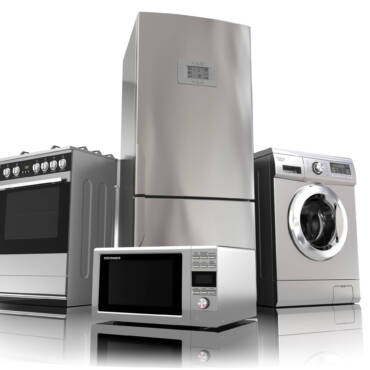Tailoring a Best Rated Standby Generator for Your Needs
When it comes to your home’s electricity needs and finding the best rated standby generator, every household is different. Several factors can influence how much electricity your household uses each day, including location, demographics, appliances, and behavior.
Heat and cooling are usually more expensive in climates with extreme temperatures. The cost of electricity may encourage homeowners to save energy, resulting in lower consumption in regions with higher costs. It’s also natural for larger households with more people to use more electricity. Individuals or couples may have different needs versus families with young children or elderly parents.
A lot also depends on what kind of appliances you own, and how efficient they are. Compared to newer Energy Star-rated appliances, older and less efficient units use more energy. Appliances that consume lots of energy, such as air conditioners, heaters, washers and dryers, absorb even more energy each month.
Of course, we can’t rule out household behavior and the power in individual habits. Compare your household to others. Do you use more energy or less energy? Are you turning off lights appropriately, unplugging unused electronics, and adjusting thermostats to consume less energy? These questions get to the heart of how to measure your electricity usage.
The average U.S. household uses 29 Kw of electricity each day, or about 899 Kw per month. The average might be 39 Kw in Louisiana versus 17 Kw in Hawaii during a given season, showing state-by-state variation.
How much electricity does your household consume? Find your monthly electricity bill and look for your kilowatt usage. Finding the right home standby generator starts with tracking your real-time electricity usage.
Average Electrical Use for a Best Rated Standby Generator
When researching any best rated standby generator and your energy usage, remember that there’s no such thing as a typical household. Here’s a breakdown of average daily electricity consumption for common home appliances and devices in the United States:
- Major heating and cooling appliances comprise 45 – 50 percent of total electricity consumption. Depending on the season and climate, this is the biggest energy guzzler. The average air conditioner unit uses 3 kilowatts per hour, while the average gas furnace uses 1 Kw per hour.
- Your typical refrigeration unit or units, on average, comprise about 8 percent of total electricity consumption. Whether you have one or two refrigerators, these run constantly, consuming between 2 – 3 Kw daily. Older models obviously need more power than newer ones.
- That much-cherished water heater of yours comprises 12 percent of total electricity consumption. Depending on size and usage, electric water heaters consume 2 – 4 Kw per day. Not everyone’s water heater, tank or tankless, is heated by electricity. However, various digital components need power to work.
- A washer and dryer, combined, comprise approximately 5 percent of total electricity consumption. A washer uses 1 – 2 Kw per cycle, and a dryer can use up to 4 – 5 Kw.
- If you have an electric oven and stove, those comprise 3 percent of total electricity consumption. Stovetops and ovens use different amounts of energy depending on their size and brand.
“U.S. households need energy to power numerous home devices and equipment,” states a report by the U.S. Energy Information Administration. “But on average, more than half of a household’s annual energy consumption is for two uses: Heating and air conditioning. The remaining share was for televisions, cooking appliances, washers and dryers, as well as a growing list of consumer electronics.”
Your Home’s Power Consumption Facts: A Typical Breakdown
When reviewing a best rated standby generator, know that 73 – 78 percent of daily electricity consumption comes from five areas. Your remaining usage makes up the rest, although this is an average and your actual usage may vary.
The more you understand your appliances, the more you can tailor what type of whole-house generator you need. The U.S. Energy Information Administration also says that the average household consumes 10,500 kilowatts of electricity each year.
“Because of population shifts to warmer climates and availability of air conditioning, this has been one of the fastest-growing uses.” But that’s not the only reason, the EIA analysis says. “Nearly all homes have a refrigerator, and in 2020, 34 percent had two or more.”
Nonetheless, with growing electricity usage comes growing risks to the nation’s regional electrical grid. “Every year, power outages affect millions of people,” states a study in the Journal of Infrastructure Systems. “Historical data shows that between 2000 and 2016, 75 percent of outages were caused by severe weather events. The National Association of Regulatory Commissioners has recently emphasized the importance of building electricity sector resilience to ensure long-term reliability.”
Economic losses were estimated using historical data from the U.S. Bureau of Economic Analysis between 1997 and 2019. Due to a 1 percent electrical inoperability, the nation lost an estimated $11.6 billion in gross domestic product each year. “These results can justify the need for investments in long-term resilience,” it stated.
For many homeowners, they’re investing in their own electrical resilience. But before they purchase a home backup generator, they’re reviewing its characteristics and qualities.
Great Qualities of any Best Rated Standby Generator
Homeowners tend to prioritize a variety of features, not just one, when choosing any best rated standby generator. However, the common denominator between households is usually a whole-house generator’s performance and reliability.
You’ll want your generator’s start-up to be automatic, as a seamless transition to powering your home during outages is paramount. Also, you want a generator that’s durable and long-lasting, designed to withstand harsh weather conditions.
Fuel efficiency and efficient operation are also important, as this helps lower your natural gas or propane costs. So are noise levels. A generator that runs quietly to minimize disruption is optimal.
One area that sticks out for homeowners is sufficient kilowatt capacity. Depending on your needs, a big enough generator will cover more than just your essential appliances. However, you’ll want to balance your maintenance needs. Even non-technical users can usually monitor any system, whether at home or remotely. Routine maintenance is minimal as long as you schedule yourself to do it, or a qualified and licensed service.
You should also give yourself peace of mind with comprehensive warranty coverage, as well as safety features. If you experience a malfunction or an emergency, your generator should automatically shut off.
Lastly, the generator’s brand reputation should speak for itself through a proven history and great consumer reviews. Make sure you choose a well-established manufacturer that boasts a quality track record, such as Generac. Generac’s excellent customer service is usually helpful and responsive when needed.
List Your Priorities for Maintaining Continuous Power
It’s important to remember that a best rated standby generator will depend on your household’s priorities. Take into account your budget, power requirements, desired features, and local climate. Do thorough research, compare options, and consult qualified professionals.
“The importance of maintaining a continuous electricity supply has received increasing attention,” states the Journal of Infrastructure Preservation and Resilience. “In a report, Generac posited that outages and aging power grids contributed to an increase in demand for backup power.”
While strengthening systems across the nation can minimize the frequency and duration of disruptions, the same goes for your home. Don’t wait. Look into the benefits and opportunities of a home backup generator before the next power outage hits your neighborhood.
Danley 911 Home Services Electrical
At Danley 911 Home Services Electrical, we stand out in the world of best rated standby generator providers. We assist you throughout the entire process of preparing for installation, as well as obtaining permits, inspections, and assisting with repair and maintenance. We help you optimize and fine-tune your situation and determine the correct generator size. Let us help you get the most out of your investment.



